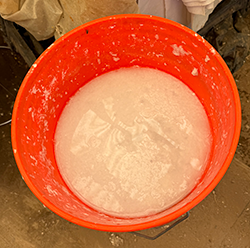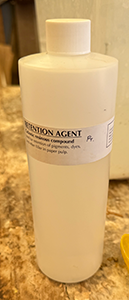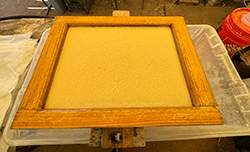Dyeing Pulp for Paper
Read the previous article on the methods of extracting, using and manipulating Pigments, Dyes and Natural Dyes as I am not likely to re-explain some of the processes.
The Actual Process of Using Sawdust of the Osage Orange Tree
- Added about 12 qts of water (neutral PH) to stainless steel pots (2)
- Added 1359g (3 lbs) of used* Osage sawdust, split between the two pots. *(Before I received this sawdust, it had been used to dye 3 batches of wool. It still has plenty of dyeing power.)
- Placed the pots outside in the summer heat (102°).

- After 2 days, strained liquid through a fine mesh sieve with finer mesh (12XX) silk screen fabric lining the sieve. I added more water to the pots and let them set. Strained off the additional water.
- To concentrate the dye (so the pulp wouldn't be totally over diluted with water/dye), boiled and then simmered the water/dye until the volume went from about 16 qt. to about 2 qts.
- From a previous pulping run, I saved 4 gallons of half-stuff, recycled pulp. To this I added 8 Tbs of retention agent and 2 qts. of dye.


- With a paint stirrer attached to a drill, stirred solution for about 10, 3 min Ska songs (30 min.) It became a beautiful caramel color. Pretty much only the pulp tinted and not the water.

- 4 qts half-stuff to 10 gallons of water to start the sheetforming. 1 qt. added for every 3 sheets (A3). Ended up with about 40 sheets.






